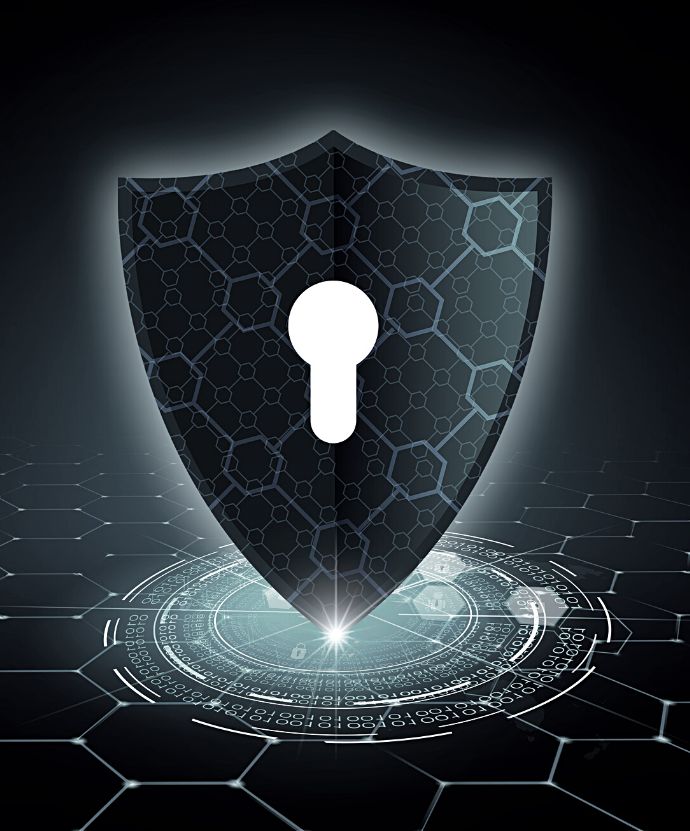Knowledge Center: Data Security & Privacy

Data Security and Privacy
Being free from being watched is referred to as having privacy. The absence of personal identity on the internet and digital world is called digital privacy. Security is not having to worry about getting injured or losing anything. Online safety is a set of precautions we take in the digital world to protect ourselves and our data from nefarious use. Many individuals mistakenly believe that safety and privacy in our digital age are synonymous. Safety is a subset of privacy. Consider a scenario where you are among friends in a secured room, safe but not alone. Because we might disclose certain sensitive information with our service provider for a few services, we prioritize safety above secrecy.
- Physical Breach – A material breach involves physically stealing documents or devices containing cardholder account information, such as cardholder receipts, files, computers, and POS systems. It can also be referred to as corporate espionage, and items at risk include laptops and desktops, external hard drives, etc.
- Electronic Breach – A system or network environment where cardholder data is processed, stored, or transmitted is subject to electronic intrusion if it is accessed or intentionally compromised. This can happen due to application-level attacks that find system vulnerabilities through web servers or websites.
- Skimming – Skimming is the process of reading and capturing magnetic stripe data from the back of credit cards. This procedure uses an external gadget that is sometimes secretly installed on the merchant’s POS. A rogue employee can potentially lose the card by using an external device to read the magnetic stripe information. These identity thieves collect data to create counterfeit debit and credit cards.
Ensuring the confidentiality, integrity, and accessibility of all data is the goal of data security. Security experts deploy cybersecurity measures like data encryption and permission. They guard against harmful assaults and stop data breaches. Contrarily, data privacy concentrates on information about specific people. What kinds of PII may be gathered, about whom, how much, and how it may be used are all governed by privacy laws. Businesses must make sure that only the necessary access privileges are given to employees, partners with whom they share data, and members of the public.
Data privacy rules outline the proper methods for gathering, storing, and disclosing data to outside parties. The laws pertaining to data privacy that are the most frequently debated are:
- ISO 27001 relates to how an organization keeps data accurate, available, and accessible only to approved employees.
- ISO 27701 relates to how an organization collects personal data and prevents unauthorized use or disclosure.
- The EU’s General Data Protection Regulation (GDPR)
- Canada’s Personal Information Protection and Electronic Documents Act (PIPEDA)
- The California Online Privacy Protection Act (CalOPPA)
- The California Consumer Privacy Act (CCPA)
- HIPPA
Various tools and technologies help protect your data, including:
- Data masking
- Encryption
- Automated reporting of access and other incidents
- Cloud backups / archiving with access control
- Redaction of sensitive files
- Insider threats are cybersecurity dangers from within any business to exploit a system or cause harm. The most significant factor uncovered so far is the abuse of elevated privileges granted to trusted employees of organizations. Moreover, employees can create digital chaos if the organization is not careful about the processes.
- An external threat results from attacks from the outside by people trying to gain unauthorized access to the target company’s network. Using viruses and malware, most external attacks aim to steal important data. Here it is important to remember that sophisticated and knowledgeable hackers are behind severe seizures, which is very worrying. An external threat results from attacks from the outside by people trying to gain unauthorized access to the target company’s network. Using viruses and malware, most external attacks aim to steal important data. Here it is important to remember that sophisticated and knowledgeable hackers are behind severe seizures, which is very worrying.
- Phishing
Phishing refers to the attempt to get private information while posing as a respectable inquirer. A criminal person or organization could “fish” for information by sending phony emails or other communications to obtain login credentials or other sensitive data.
- Malware
Malware describes malicious software intended to launch attacks against the computer or server from where it is downloaded or executed. Attacks by malware may destroy data or even bring down a whole system.
- Ransomware
Ransomware is essentially locking down a victim’s data and encrypting them to prevent access. The attacker will often subsequently demand payment (sometimes in the form of cryptocurrency sent anonymously) to decrypt the data. It could be the most considerable cyber security risk at the moment.
- Trojans
Viruses called trojans are another type of malware. However, as the name implies, they will sneak into your system. They frequently pretend to be a legitimate file or program to deceive you into executing or installing it. A trojan might attempt to deactivate your antivirus software, download other malware, or include your computer in a DDoS assault after it has obtained access to your system (more on those further down).
- DDoS attacks
When a hacker utilizes several devices—often thousands of them—to overwhelm target systems, it is called a Denial of Service/Distributed Denial of Service Attack (DDoS). The attacker often targets websites, which can typically only handle a certain number of users at any given moment. As a result, the website (and any related services) become temporarily unavailable.
- Securing the data at rest and data in flight
- Using secured protocols for data connections
- Implementing ACLs
- Performing periodic audits or data assets and access lists
- Regularly updating and patching software.
- Using strong passwords.
- Using multi-factor authenticators wherever possible.
- Using reliable and certified antivirus software.
- Backing up data regularly on the cloud.
- Running forced penetration tests to ensure the safety and strength of networks and interfaces
- Reducing dependency and access of third-party applications to critical networks and servers.
